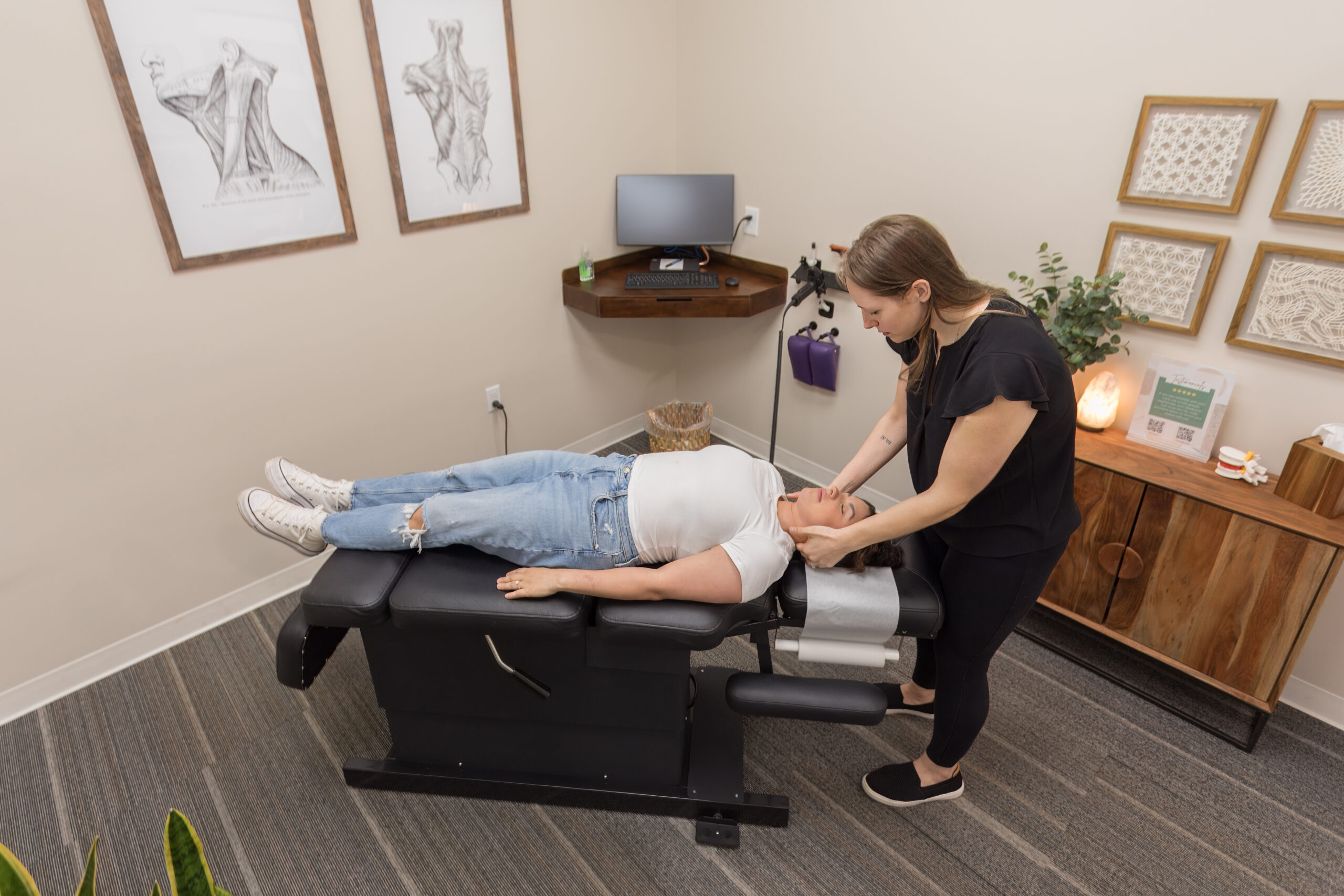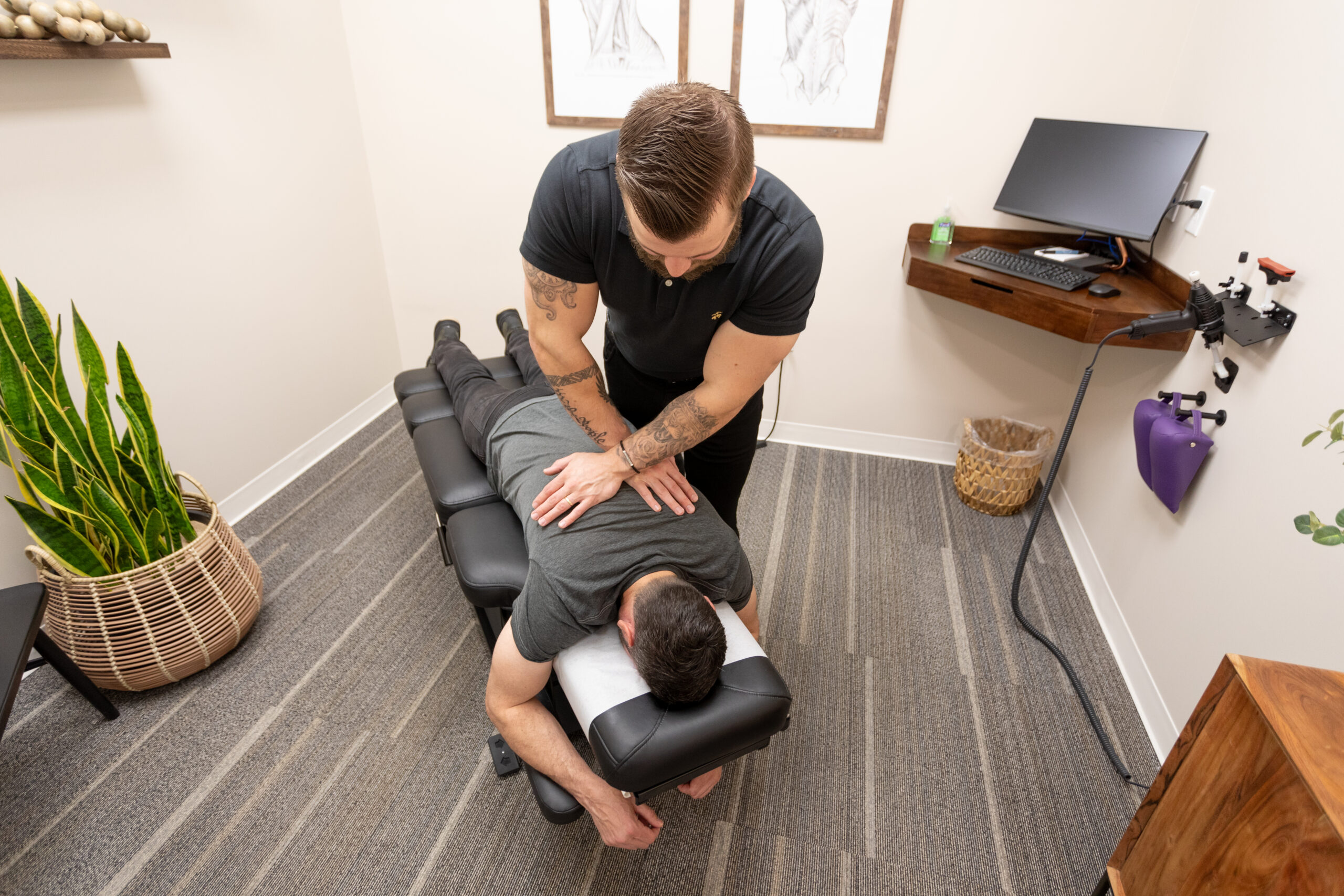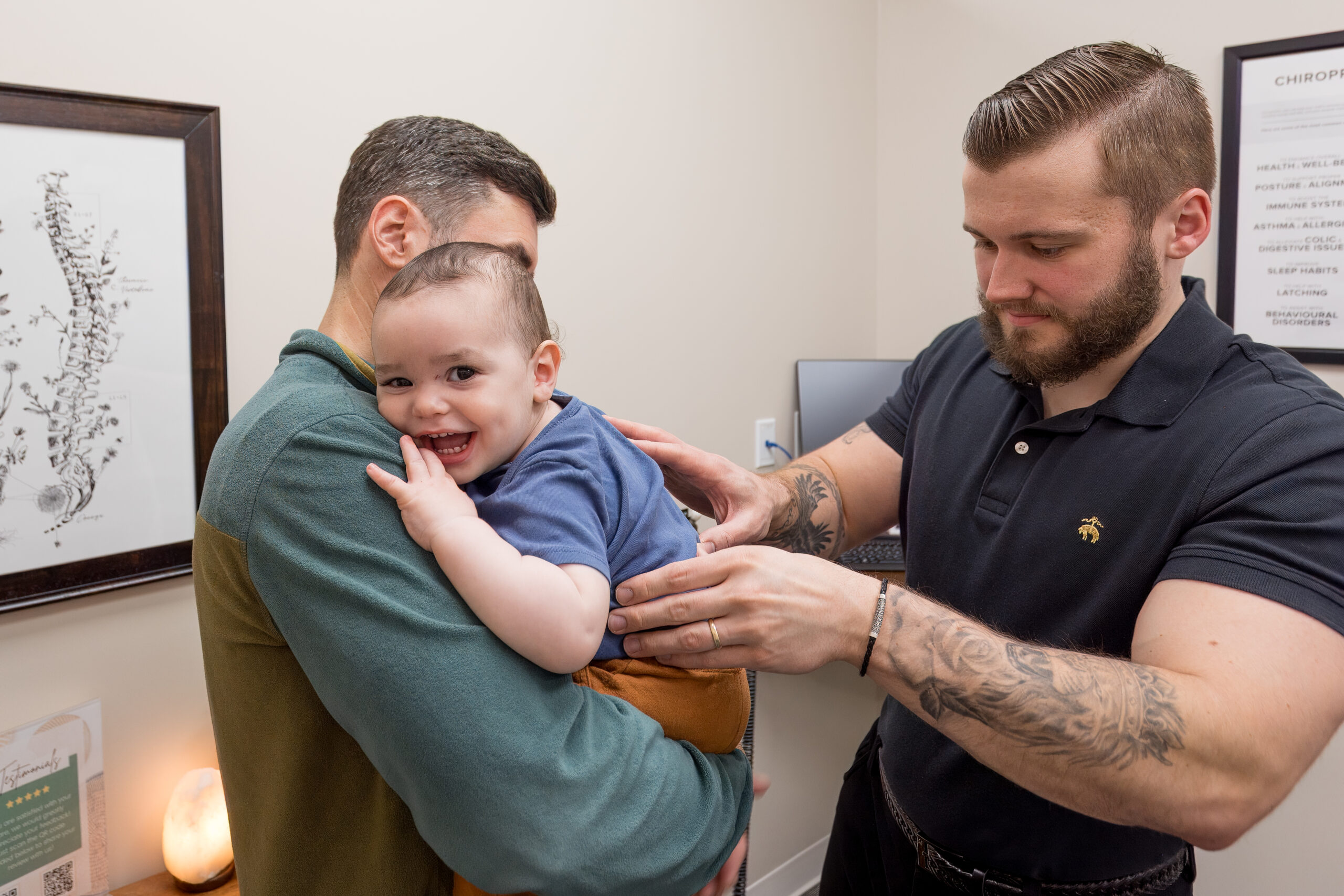Adjusting Techniques
Palmer Package
The Palmer Package comprises a range of methods introduced at the Palmer College of Chiropractic in Davenport, Iowa, where chiropractic originated in 1895. This approach serves as both a chiropractic analysis system and a method to reduce the energy required to adjust the spine. It involves a specialized table with sections that drop away. The Palmer Package provides our chiropractors with a set of adjustment tools essential for addressing a wide array of spinal issues.
The Palmer Package chiropractic techniques include:
- Diversified Chiropractic Technique (DCT): This technique is a traditional and most widely used method for realigning the spine and joints through a swift and precise thrust. It aims to regain proper movement and alignment, addressing subluxation or dysfunction. The first step is to evaluate the spine for any misalignment. Once misalignments within the spine are identified, a precise manual thrust is applied to correct the affected joints. This method requires expertise, hands-on skills, and a deep understanding of spinal mechanics to improve the back’s flexibility. The manual thrust technique includes using a brief (low-amplitude), rapid (high-velocity) thrust on a restricted joint to restore proper motion.
DCT was first developed by Dr. D.D. Palmer (founder of Palmer College of Chiropractic) in 1897.
The diversified technique has three main objectives:
- Restore spinal alignment
- Repair joint dysfunction
- Enhance proper movement
- Thompson Technique: The Thompson Technique, created by Dr. J. Clay Thompson, is a chiropractic analysis system designed to provide patients with a gentler adjustment method. Using a specialized drop table, chiropractors can deliver high-velocity, low-amplitude, and low-force adjustments effectively. A distinctive aspect of the Thompson Technique involves assessing leg length inequality while the patient lies face down on the table. By flexing the patient’s feet, neurological imbalances can be identified, which may cause one leg to appear longer than the other.
- Gonstead Technique: Developed by Dr. Clarence S. Gonstead, this technique is a full-spine osseous technique, emphasizing specific high-velocity, low-amplitude thrusts. During a Gonstead style adjustment, our chiropractors adjust your lower spine and pelvis by having you lie on your side. This adjusting technique when used in the cervical spine does not twist or rotate your neck.
The Gonstead Technique is based on five fundamental principles:
- The body is a dynamic, self-healing organism.
- The nervous system controls and coordinates all functions of the body.
- Any misalignment in the spine can disrupt nerve function and cause health problems.
- Misalignments should be corrected as precisely and gently as possible.
- Only the areas of the spine that need adjustments should be treated to avoid unnecessary pressure on the spine.
ArthroStim Instrument
With technology progressing, chiropractors are exploring innovative treatment methods for their patients. Considering the diverse range of individuals we encounter daily, each with varying sensitivities and pain tolerances, manual adjustments may not always be the most effective or efficient solution. To enhance treatment sessions, our doctors may incorporate tools like the ArthroStim Instrument.
What is the ArthroStim and how does it work?
The ArthroStim is a handheld device, that assists our chiropractors in performing adjustments. This tool delivers 12-14 incremental thrusts per second, which is stronger and quicker than a standard single thrust used by our doctors. By breaking down the force of a single thrust into rapid successive inputs, the ArthroStim adjusts the pressure applied by your physician during treatment, offering a more comfortable and effective experience.
To understand the functionality of the ArthroStim, it is essential to grasp the principles behind chiropractic adjustments. A chiropractic adjustment involves precise movements that activate ‘neural receptors’ in the affected area. These receptors generate nerve impulses, transmitting crucial information to the brain. The brain processes this data to enhance its understanding of the area’s condition. After assessing the adjustment’s effects, the brain can initiate corrective signals to the muscular and other systems, facilitating healing in your body. The ArthroStim offers an alternative method for delivering adjustments, which is quicker, more comfortable, and more effective thanks to its controlled repetitive input. This input triggers a ‘snowballing’ effect on neural receptors, enabling them to convey more information to the brain with reduced pain and force.
Individuals that may especially benefit from the use of the ArthroStim Instrument include:
- Acute or extreme pain
- Elderly individuals
- Infants and young children
- Individuals who dislike being “cracked”
- Individuals who require adjustments to the extremities
- Sensitive individuals
Individuals who may be larger or have increased muscle mass may find it challenging to be adjusted with a standard single thrust but can still benefit from the “neurological assist” offered by the ArthroStim Instrument.









![Copy of [Original size] Beige Green Simple Welcome to Neighborhood Greeting Gift Card (6)](https://getsimplywell.com/wp-content/uploads/2024/04/Copy-of-Original-size-Beige-Green-Simple-Welcome-to-Neighborhood-Greeting-Gift-Card-6.png)